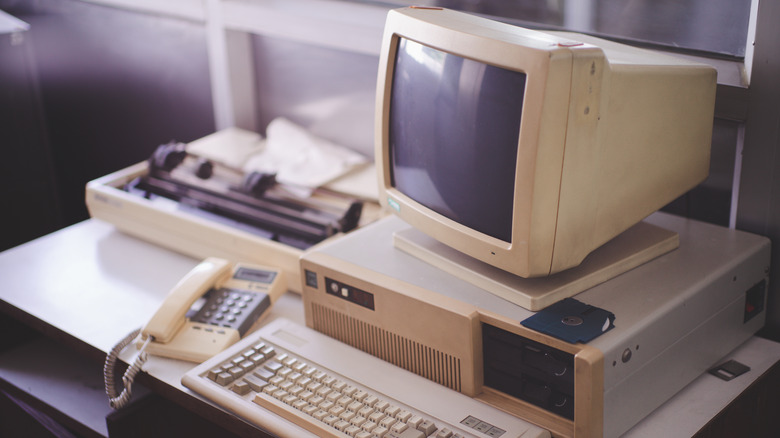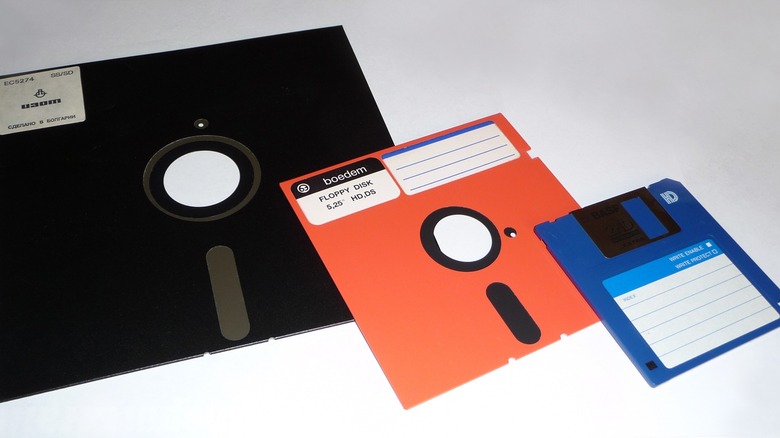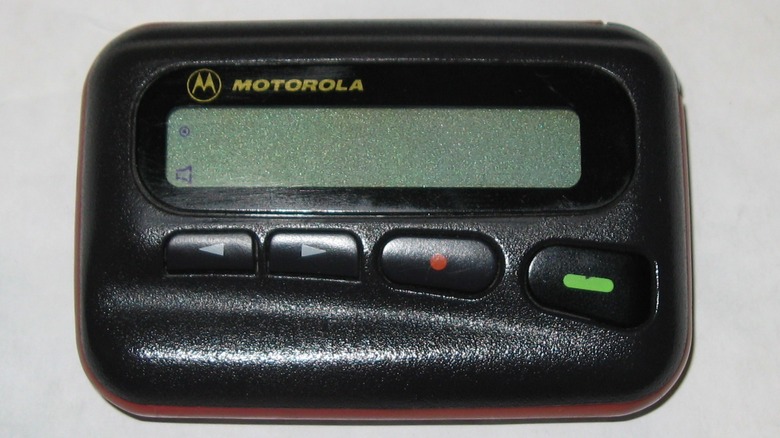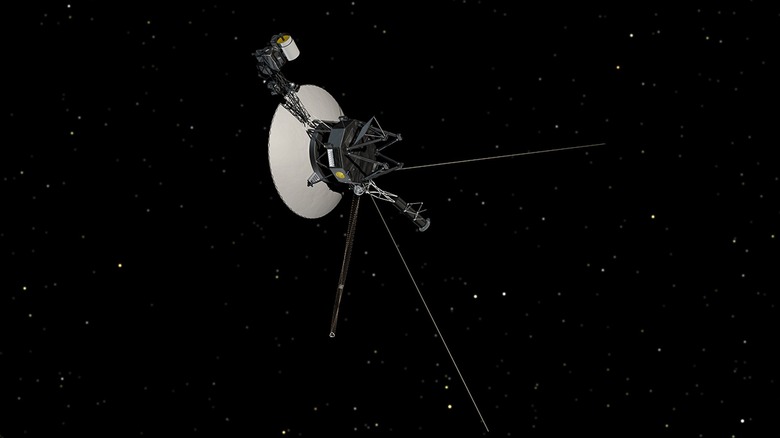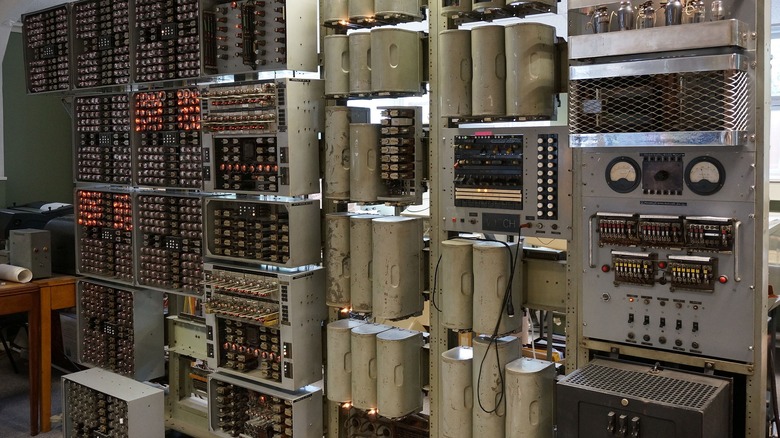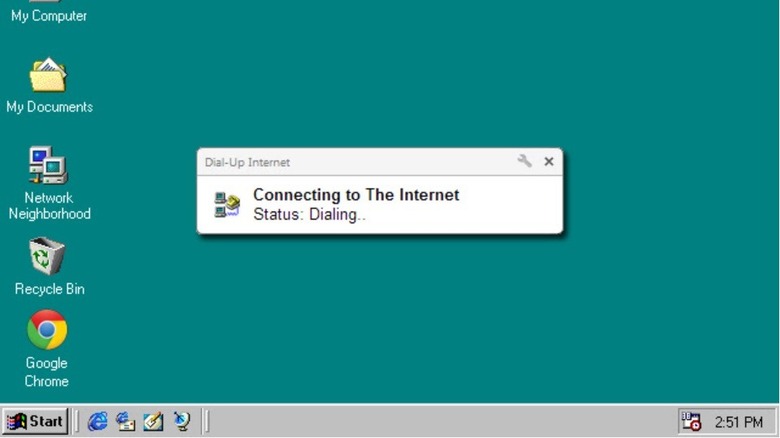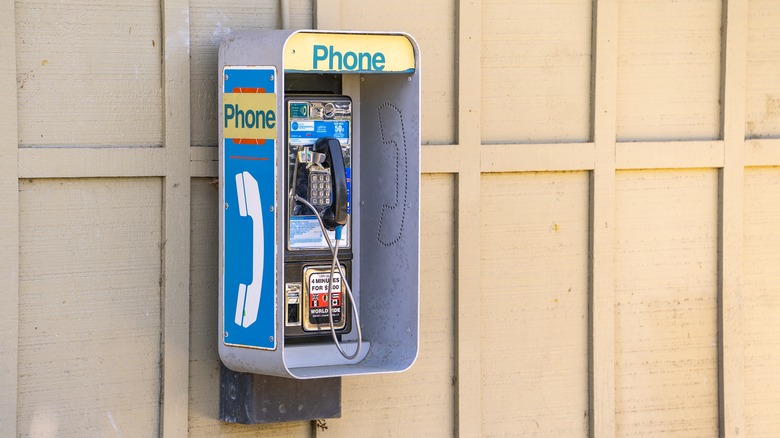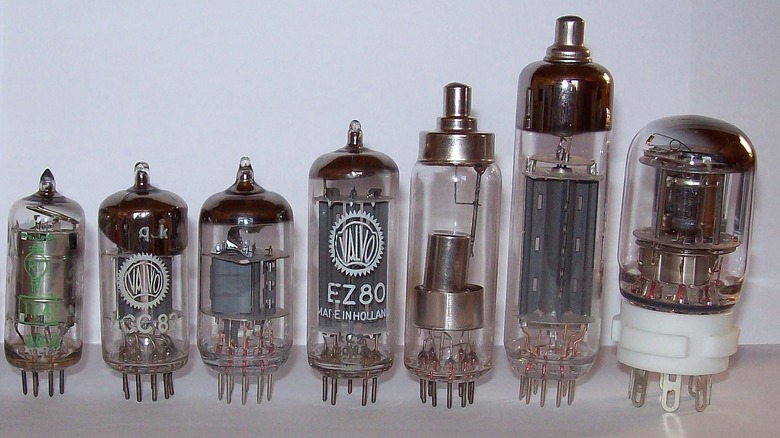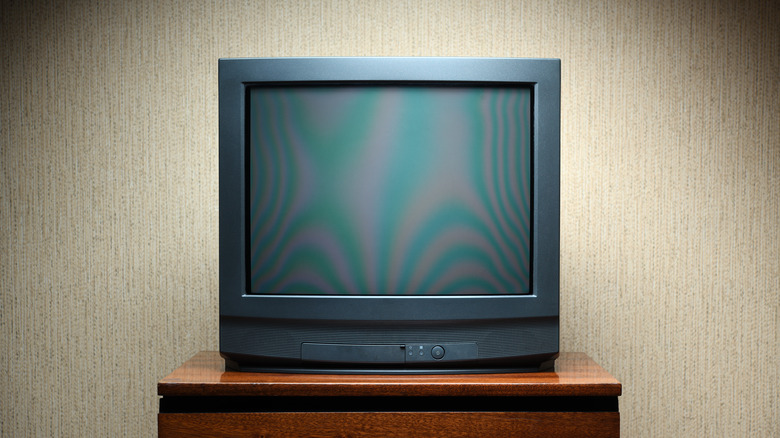Old Pieces Of Technology That Still Work Today
It used to be that a technology would last for generations. Major innovations were rare, and they stuck around for a long time. Any newly emerged technology was likely to still be in use when your grandchildren's grandchildren were born. In many cases, those days are gone.
Innovation begets innovation and, after tens of thousands of years of inventing our way out of the caves, we've reached a point wherein new technologies become obsolete almost as quickly as they emerge, at least on historical timescales. This technological evolution is perhaps most apparent in entertainment. Those of us in middle age have seen music shift from vinyl or 8-track to cassette tapes, to CD, and finally to digital. Likewise, movies transitioned from VHS and Betamax to laserdisc, to DVD, to Bluray, and finally to digital. It's difficult to imagine where it can go from here, but history suggests it's going somewhere, and fast.
Technology moves inexorably forward and that often means that tech which was once a mainstay of everyday life falls away to the sands of time. Some technologies, however, find a way to carve out a lasting niche long after they should have disappeared.
Floppy disks
Floppy disks were once the standard format for saving data or installing and running software. Those functions eventually transitioned to internal or external hard drives, CD-ROMs, and digital downloads, and the floppy disk found its way into museums and landfills. Today, the floppy disk's most lasting legacy is as the shape of the save icon on your computer.
Or so you thought.
Believe it or not, the floppy disk is still in use in certain corners of our world where time, somehow, hasn't touched it. The commercial market evolved such that the average consumer likely hasn't encountered a floppy disk for decades, but private enterprise is another story.
Systems that prioritize reliability over ingenuity often operate on technology that is tried and true, rather than opting for upgrades that may provide convenience at the cost of security. That's why ATMs and some medical machinery still use antiquated floppy disk systems, (via Digital Trends).
Even some governments still operate on floppy disks and likely will for a while yet. As explained by Input, certain segments of Japan's government still use the technology, despite the last new floppy being produced in 2011.
In the United States, the Defense Department used floppy disks to control its nuclear arsenal for over fifty years and only recently phased out in 2019, siting reliability and security as the reason it stuck around so long, (via Business Insider).
Pagers
Before cell phones became the communication method of choice, pagers were the ultimate way to get ahold of someone when they were away from a phone connection. Pagers worked wireless across huge distances, something even cordless phones couldn't do, allowing you to deliver a brief message and a request for contact.
Once mobile phones came into vogue, however, the need for a pager fell away, at least for most people. Now you can immediately reach someone almost anywhere, for better or for worse. If immediate response isn't necessary, a text message takes the place of the request to call back when convenient. For many doctors working in hospitals, however, the pager never fell out of favor.
As explained in a paper published in the Journal of Hospital Medicine, while cell phones do account for some in-hospital communication, roughly half of all doctors regularly used pagers in 2017. In fact, they were the most common mode of communication. That matches an informal poll of over a thousand hospital workers in 2019, which confirmed that about half of all doctors still use pagers, (via Physician's Weekly). Among the reasons listed for holding onto their beepers were an ability to separate work life from home life, avoiding the perception of checking a phone for personal reasons, and the reliability of a pager to work even in areas where there is limited cell coverage inside the hospital.
Satellites and space probes
Sending an object into space is undoubtedly among the most technologically impressive things humanity has ever done. We've sent remote-controlled rovers to the surface of other planets and built orbiters for skimming the outer surface of the Sun. Modern spacecraft exist at the cutting edge of our technology, and yet, satellites and probes from just a few decades ago house technologies that, while adequate for the time, are almost laughable by today's standards. As explained by Real Clear Science, the average smartphone has a million times more memory and 100,000 times more processing power than the Apollo guidance computer.
Despite their technological shortcomings, some of our dated space probes and satellites are still accomplishing impressive things decades after they were launched. Voyagers I and II, the most distant human-made objects ever created, have onboard computers measuring only about 68 kilobytes, (per JPL). That hasn't stopped them from wildly exceeding their original mission. Forty-five years after they launched in 1977, both Voyager crafts are still in operation, sending data back to Earth from roughly 14.5 billion miles away, or 156 times the distance from the Earth to the Sun, (via Space).
Closer to home, The Vanguard 1 satellite continues breaking the record for oldest orbiting satellite with each passing day. Launched in 1964, six months after Sputnik, it's still going strong. Sort of. While it's no longer transmitting data, it is still orbiting and likely will continue to do so for hundreds of years, (via Astronomy).
Oldest running digital computer
The world's oldest surviving digital computer has had a storied life — and it's not over yet. Built in 1951, the Harwell Dekatron was originally used at the Atomic Energy Research Establishment at Oxfordshire. It multiplied numbers, replacing work that had previously been done by adding machines. While it could take up to ten seconds to spit out an answer, it could work reliably for hours or days at a time, something which was unheard of at the time, (via BBC).
By 1957, only six years after it was built, it was obsolete and was at risk of being dismantled. Instead, it was offered up as a teaching tool and sent as a teaching tool to Wolverhampton and Staffordshire Technical College, where it was renamed the Wolverhampton Instrument for Teaching Computation for Harwell, or WITCH or short, (via Smithsonian).
It remained in use into the 1970s at which point it was donated to a museum. Today, it lives at the National Museum of Computing in Bletchley Park, where a three-year restoration effort restored it to its former glory and full functionality, (via The Verge).
Consequently, the Harwell Dekatron is once again the world's oldest functional digital computer and a literally massive reminder of computing's figuratively small beginnings.
Dial-up internet
If you're an internet user of a certain age, you might remember the mind-blending sequence of beeps and grinds which heralded connecting to the internet. For many, it was the soundtrack of a well-spent youth exploring the nascent world wide web.
In the early 2000s, dial-up connections were largely replaced by Broadband, and the world was treated to quieter, faster internet connections. You'd be forgiven for thinking that dial-up went the way of the dinosaurs, but you'd be wrong. AOL, once the biggest name in home internet, still had 1.5 million customers as of 2021. Many of them are using AOL Advantage, which offers identity protection and technical support, but some of them are still getting online the way we did a generation ago, (via Input).
AOL isn't the only provider still offering dial-up services. NetZero, EarthLink, Turbo USA, and Juno also offer internet connection via a phone line. As explained by Allconnect, speeds are likely to be limited to 56 kbps with faster speeds available at a premium, but the price and availability are appealing to some consumers. In fact, some providers offer up to 10 hours per month of dial-up connectivity at no cost. For users in areas where cable or satellite internet isn't available, or who have economic constraints, dial-up offers a way to get connected they might not otherwise have.
Payphones
It used to be that when you wanted to call your parent to pick you up from the mall, you had to walk to the bank of payphones and drop in a quarter, or else make a collect call if you spend all your pocket change at the food court. Like the pager, the advent of cell phones (often sold at kiosks in those very same malls) largely did away with payphones. At least, you'd think that was the case.
While there used to be millions of payphones spread out all over the country, as of 2018 that number had declined to roughly 100,000 in the United States, (via CNN Business). About a fifth of the remaining payphones exist in New York, but they've found homes in other cities and areas off the beaten path, like campgrounds and national parks.
Cell phone service has become the dominant mode of phone communication but any cursory look at a coverage map will show reveal that you're not covered anywhere you might go. Moreover, companies still operating payphones have indicated that usage goes up markedly in the wake of severe weather or natural disasters when cellular networks might go down or be overwhelmed.
Vacuum tubes
We owe a lot to the vacuum tube. No, not the hose which sucks up dirt from the corners of your living room, but primitive glass tubes housing electrodes. Technologies as wide-ranging as early computers, radios, televisions, and telephone systems relied on vacuum tubes to do their work, (via Computer Hope).
While they worked well for the time, they took up a lot of space which limited the number you could have inside the finite space of consumer electronics. Moore's Law being what it is, we needed a more compact solution and transistors filled that role.
As explained by Engineering, when the transistor was invented in 1947, the death of the vacuum tube wasn't far behind. Transistors could do almost everything a vacuum tube could do but in a much higher density and without needing to be replaced as often.
Still, vacuum tubes are used in specific technologies when power needs exceed those easily achieved by semiconductors. Take a look inside a particle accelerator or an MRI machine and you'll find vacuum tubes still hard at work. In fact, you likely still have them in your home. The magnetron inside your microwave oven—the part of the oven responsible for creating the radio waves that heat your food—is a vacuum tube, (via ElectronicDesign). Every time you reheat a burrito or a cup of coffee, you have this antiquated technology to thank.
Carbon paper
Today, the term "carbon copy" has become synonymous with something being identical, but it traces its roots back to carbon paper. You've probably also encountered its abbreviated version any time you "cc" someone on an email.
Sandwiched between two sheets of ordinary paper, carbon paper allowed people to make copies of original documents when writing or typing. It saved time if you needed to make multiple copies of the same document or if you just needed a facsimile to keep for your records.
Carbon paper fell out of favor in the wake of several technological innovations. Carbonless transfer paper replaced its messy predecessor with paper coated in a combination of paraffin wax, carbon black, and mineral oil which creates marks through a chemical reaction when pressure is applied, (via Review Inspiration). Later, affordable scanners largely did away with the need for creating physical duplicate copies of documents at the same time as the original.
Today, you're unlikely to encounter carbon paper, mostly because it's messy and outdated, but it has found a second life in the art world where its carbon transfer ability can be used to move patterns onto finicky materials or used as a medium of art itself, (via Cloth Paper Scissors).
Airships
Before airplanes really took off, the best and sometimes only way to travel long distances over the air was the airship. In fact, the first airship lifted off more than fifty years before the Wright brothers achieved the first powered flight.
Instead of achieving lift through the physics of wing design, they used lighter-than-air gases to raise themselves into the air. Even after airplanes hit the mainstream, airships were a common way to travel trans-oceanic distances that planes couldn't yet handle. The Hindenburg disaster more or less ended the airship's tenure as a mode of travel and the number of blimps or zeppelins you were likely to see in the sky decreased dramatically.
Today, there are only 25 blimps still in operation and they're largely used for advertising purposes, (via Reader's Digest). While the airship appears to be a slowly dying technology, that might be about to change.
As explained by SingularityHub, several companies are working toward reviving airships as a method of passenger or cargo transportation. Instead of taking a flight around the world, the next generation of airships could offer slower, more ponderous and comfortable, journeys more akin to flying cruise ships.
One company, Ocean Sky Cruises, is offering flights from Svalbard to the North Pole by airship beginning in 2024. Passengers will get their own cabin and all meals and drinks included. The only downside is the price tag of two million Swedish Krona, or roughly $200,000 USD.
CRT TVs
Modern televisions are flat, slim, and often mounted to the wall where they are out of the way. Not very long ago, however, TVs were bulky as a consequence of space-gobbling cathode-ray-tubes. As television technologies evolved, CRT TVs were quietly replaced inside consumer homes (ending your ability to play Duck Hunt), but they persist in some corners of the world.
Many common locales, like grocery stores and hospitals, haven't replaced the TVs hooked up to their closed-circuit security systems, meaning you're likely to spot a grainy version of yourself ambling across a CRT as you exit the store or hospital gift shop.
Arcades still use CRT TVs to support some of their older games and arcade cabinets, either because that's what they came with and haven't needed replacing, or because the games were designed to work on that display technology. In fact, some older games actually look worse or don't work at all on modern TVs.
As explained by The Gamer, there's a revival effort happening in the gaming community to preserve the CRT with some old televisions selling on the secondary market for thousands of dollars. If you're inclined to play Duck Hunt and other retro games the way the game gods intended, you might want to grab hold of a CRT while you still can.
